How to get rid of cyanobacteria in aquariums?
Introduction
Maintaining a healthy aquarium involves tackling various challenges, including cyanobacteria blooms, which can disrupt the aquatic environment. This guide offers insights on how to get rid of cyanobacteria effectively, ensuring your aquarium remains a thriving habitat for its inhabitants.
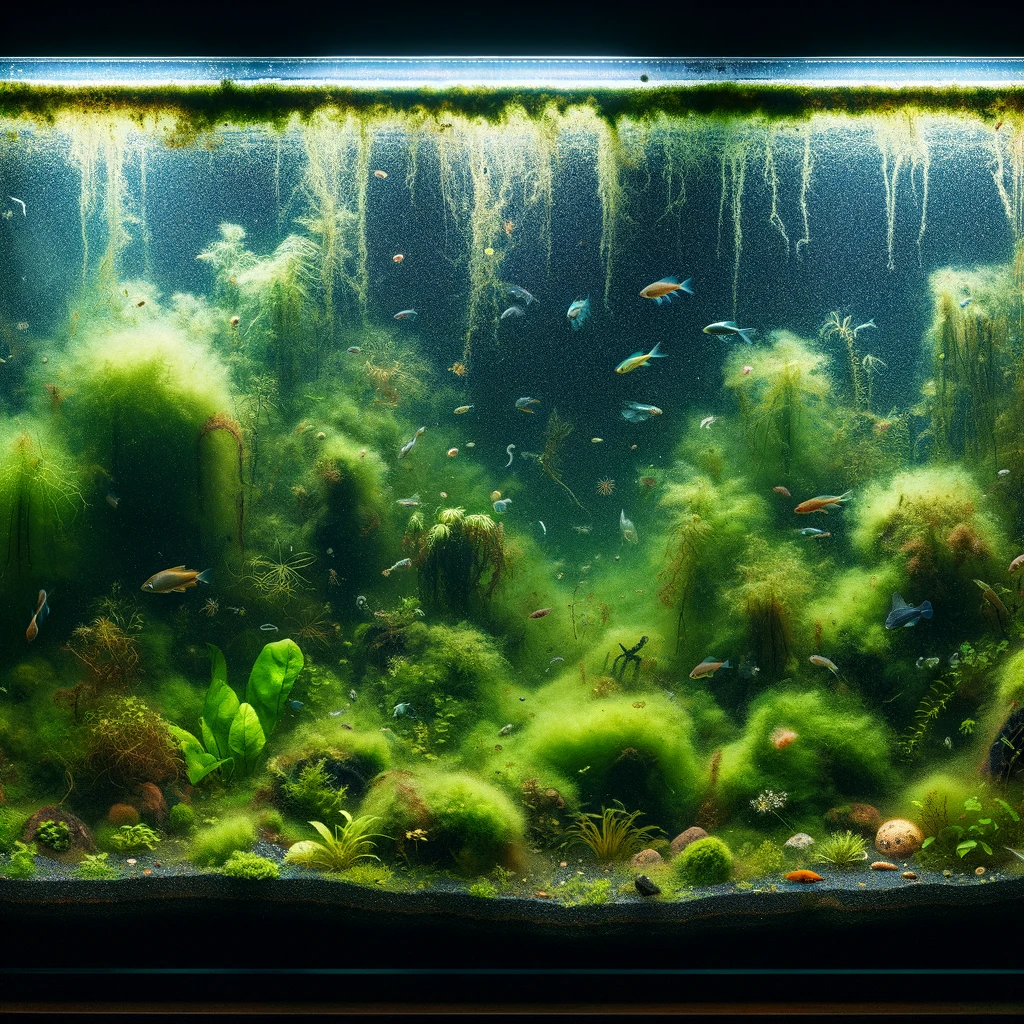
What is Cyanobacteria?
Cyanobacteria, commonly mistaken as blue-green algae in aquariums, are not true algae but photosynthetic bacteria. These organisms can create mats on aquarium surfaces, displaying colors from green to black. Unlike algae, cyanobacteria thrive under various conditions, making them a persistent issue for aquarium owners. Understanding cyanobacteria's nature is the first step toward effectively managing its presence and ensuring the health and balance of your aquatic environment.
Common Causes of Cyanobacteria in Aquariums
Cyanobacteria in aquariums often result from excessive nutrients, such as nitrates and phosphates, poor water circulation, and inadequate lighting. These conditions favor cyanobacteria's growth, leading to blooms that can quickly overrun aquarium surfaces. By identifying and mitigating these contributing factors, aquarium enthusiasts can take proactive steps toward preventing cyanobacteria outbreaks, safeguarding the health and aesthetic appeal of their aquatic setups.
Identifying Cyanobacteria in Your Aquarium
Identifying cyanobacteria involves recognising its slimy, mat-like appearance, which can cover the substrate, decorations, and plants in the aquarium. Its distinctive coloration and texture, along with its preference for low-flow areas, distinguish it from other algae types. Early detection and accurate identification are crucial for implementing effective control measures, ensuring the prompt and efficient removal of cyanobacteria from your aquarium.
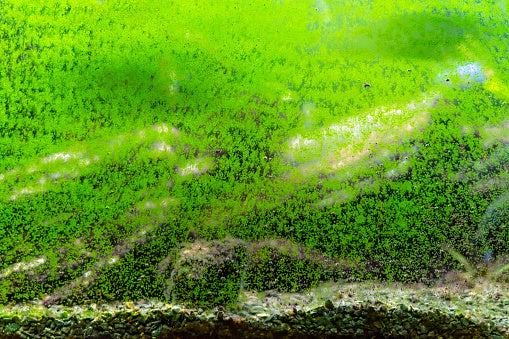
The Risks of Cyanobacteria to Aquatic Life
Cyanobacteria poses significant risks to aquarium inhabitants by depleting oxygen at night, releasing toxins harmful to fish and invertebrates, and obstructing light necessary for plants. These impacts highlight the importance of addressing cyanobacteria blooms swiftly and effectively. Protecting your aquarium from cyanobacteria ensures the well-being of its ecosystem, promoting a healthy balance for all residing life forms.
Prevention Strategies
Effective prevention against cyanobacteria blooms in aquariums involves a multifaceted approach. Regular maintenance and stringent preventive measures are foundational to keeping blue-green algae at bay. This includes maintaining optimal water quality and filtration, which are crucial for control and removal of excess nutrients that fuel these blooms. Aquarium enthusiasts, particularly those with freshwater aquariums, should focus on these practices to protect their aquatic plants and animals from the potential harm caused by unchecked cyanobacteria blooms. Engaging in these preventive actions helps ensure the health and balance of the aquarium environment.
Importance of Regular Water Changes
Regular water changes are a cornerstone of aquarium health, playing a vital role in controlling nutrient levels that could encourage cyanobacteria blooms. By removing waste, excess food, and decaying plants, water changes help reduce the nutrients available for blue-green algae to thrive. Incorporating filtration systems that efficiently remove particulate matter further supports this effort by enhancing water quality. For those managing planted aquariums, regular maintenance including water changes is essential not just for the health of the aquarium but also for preventing conditions conducive to cyanobacteria blooms, thereby minimizing the need for chemical treatment.
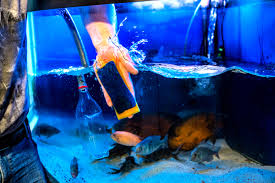
Controlling Nutrients in the Aquarium
Effective nutrient management is crucial to prevent cyanobacteria blooms in aquariums. Excessive nutrients, particularly in freshwater aquariums, serve as a prime food source for blue-green algae. Implementing strategies such as careful feeding, removing uneaten food promptly, and ensuring adequate filtration can significantly reduce nutrient levels. Plants in the aquarium also play a vital role by absorbing these excess nutrients, thereby limiting the resources available for cyanobacteria to thrive. Regular maintenance, including gravel vacuuming and filtercleaning, further aids in controlling nutrient accumulation, making it an essential practice for maintaining a healthy aquarium environment.
Optimizing Lighting Conditions
Lighting plays a pivotal role in the growth of cyanobacteria and aquarium plants. Planted aquariums require a delicate balance of light—enough to support the plants but not so much that it encourages cyanobacteria blooms. Adjusting the duration and intensity of light can help control the growth of blue-green algae. Utilizing timers to regulate light exposure and choosing the correct spectrum can enhance plant growth while inhibiting cyanobacteria. This balance is critical to the ecosystem of the aquarium, as improper lighting not only harms plant health but can also exacerbate cyanobacteria blooms, highlighting the importance of careful light management.
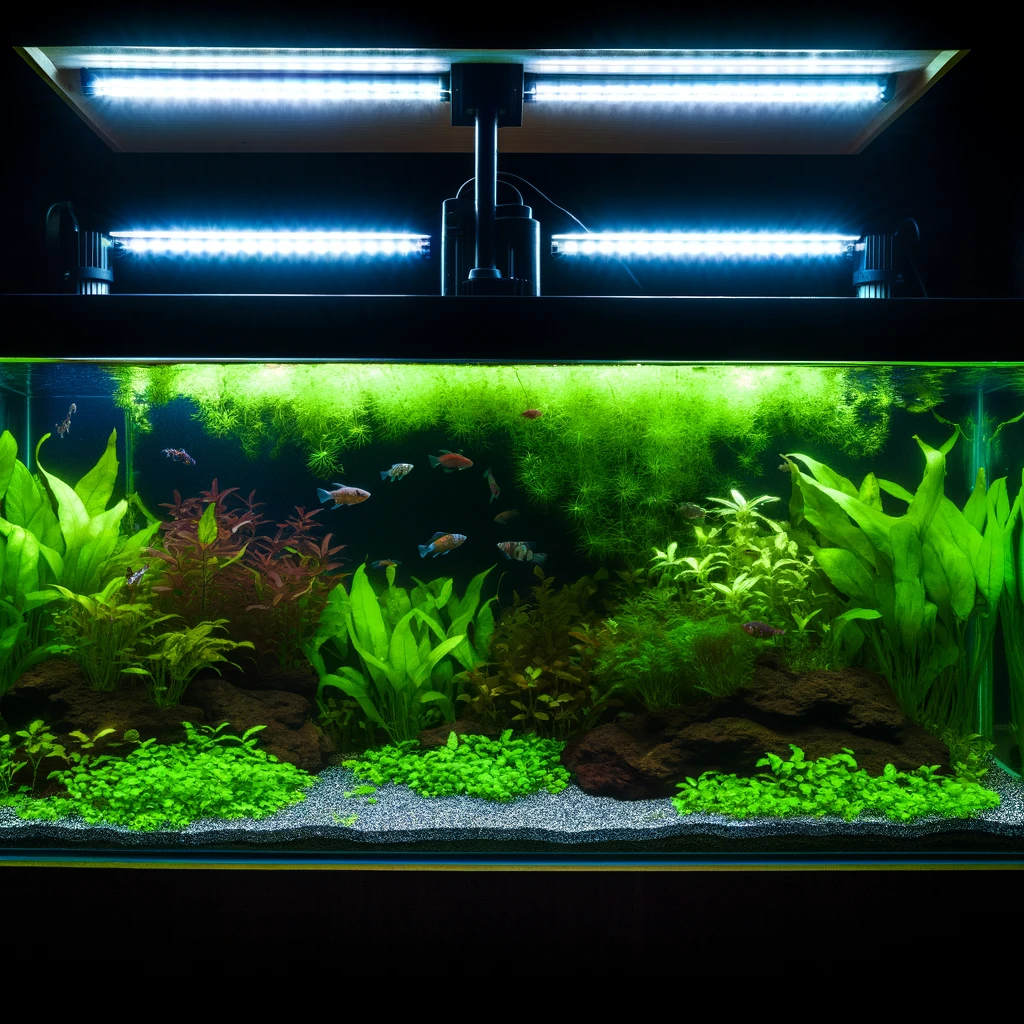
The Blackout Method: An Efficient Strategy Against Cyanobacteria
The blackout method stands out as a highly effective approach to combat cyanobacteria blooms in aquariums. By completely eliminating light for 3-5 days, this technique deprives cyanobacteria of the photosynthesis process it relies on for growth. Prior to initiating a blackout, it's crucial to perform a water change and remove as much cyanobacteriaas possible manually. During the blackout, ensuring the aquarium remains well-oxygenated and maintaining filtrationare essential to support the health of fish and plants. This method, while drastic, can significantly reduce or eliminate cyanobacteria without the need for chemical treatments, making it a favored choice among aquarium enthusiasts for restoring balance to their aquatic environments
Mechanical Filtration and Cyanobacteria
In the battle against cyanobacteria blooms in aquariums, mechanical filtration emerges as a key ally. Effective filtration systems physically remove particles and organic matter that could otherwise fuel the growth of blue-green algae. For planted aquariums, this is particularly important as it ensures clear water and minimizes the organic waste that cyanobacteria feed on. Upgrading filtration capabilities or increasing filter maintenance frequency can enhance this control method. Moreover, filtration works in tandem with aquarium plants to create a more stable environment, reducing the risk of cyanobacteria blooms and promoting healthier plant and animal life within the aquarium.
Chemical Treatments for Cyanobacteria
When cyanobacteria blooms become unmanageable through physical and environmental controls in aquariums, chemical treatment may become necessary. However, the use of chemicals should be approached with caution to avoid harm to aquarium plants and inhabitants. Specific algaecides designed for aquarium use can target blue-green algae without adversely affecting plants or animals when used correctly. It’s important to follow dosage instructions carefully and consider the impact on filtration systems, as some treatments may require temporary removal of filtermedia. This approach should be part of a broader strategy, including regular maintenance and environmental adjustments, to ensure long-term control of cyanobacteria blooms.
Selecting the Right Chemical Treatments for Cyanobacteria
To effectively combat cyanobacteria blooms in aquariums, several chemical treatments are available, each with specific applications and considerations. Copper-based algaecides, though potent against blue-green algae, must be used with utmost caution to prevent harm to aquarium inhabitants, especially in planted aquariums where plantscan be sensitive to copper. Another option is the use of antibiotics like erythromycin, which targets cyanobacteriadirectly without affecting plants or animals when used as directed. However, it's crucial to use antibiotics judiciously to avoid disrupting the aquarium's biological filtration and causing resistance issues. Additionally, products containing hydrogen peroxide can offer a temporary solution by oxidizing cyanobacteria cells, although they require careful application to avoid damaging aquarium plants and fauna. Always follow the manufacturer's instructions and consider the specific needs and balance of your aquarium ecosystem when selecting a chemical treatment.
Natural Solutions: Utilizing Beneficial Bacteria
Incorporating beneficial bacteria into the aquarium is an effective strategy for naturally mitigating cyanobacteria blooms. These beneficial microorganisms compete with cyanobacteria for nutrients, reducing the likelihood of blue-green algae outbreaks. For planted aquariums, the presence of these beneficial bacteria is doubly beneficial, as they also promote healthier plant growth by improving nutrient cycling. Adding bacterial supplements to the aquarium can enhance filtration efficiency and contribute to the overall stability of the ecosystem. This approach, combined with regular maintenance and preventive measures, can help maintain the balance necessary to control cyanobacteria blooms without resorting to chemical treatment, thereby preserving the health of aquarium plants and inhabitants.
Manual Removal Techniques
Manual removal is a direct and immediate method to reduce cyanobacteria blooms in the aquarium. Using a siphon to vacuum the aquarium substrate and physically removing blue-green algae from plants, rocks, and decorations can quickly decrease the cyanobacteria population. In planted aquariums, care should be taken to avoid harm to plantsduring the cleaning process. Combining manual removal with filtration improvements, such as cleaning or upgrading filter media, enhances the overall effectiveness of this strategy. Although labor-intensive, manual removal is a crucial component of a comprehensive aquarium management plan, working in tandem with other methods to control cyanobacteria blooms and support aquarium health.
The Role of Aquarium Plants in Controlling Cyanobacteria
Aquarium plants play a pivotal role in the ecological balance of planted aquariums, offering a natural method to combat cyanobacteria blooms. By absorbing excess nutrients from the water, plants directly compete with blue-green algae for resources, effectively limiting the latter's growth potential. Additionally, the dense foliage of plants can shade the aquarium bottom, reducing the light available for cyanobacteria and further inhibiting its proliferation. Cultivating a thriving plant population is not only aesthetically pleasing but also contributes significantly to the controlof cyanobacteria, enhancing the overall health and stability of the aquarium environment.
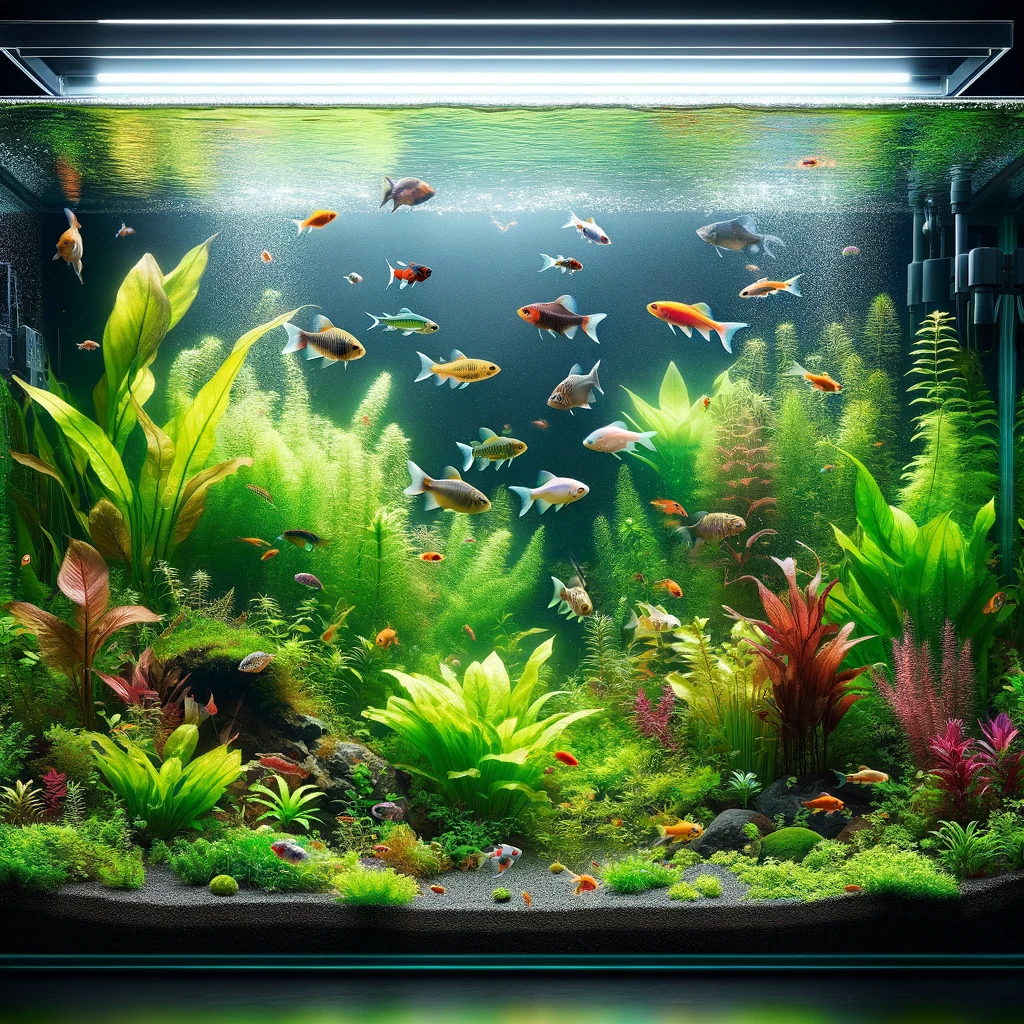
Quarantine Practices for New Additions
Implementing quarantine practices for new plants and fish before introducing them to the main aquarium is a critical preventive measure against cyanobacteria blooms. This procedure helps ensure that potential sources of blue-green algae are identified and addressed in a controlled environment, reducing the risk of introducing cyanobacteria to the aquarium. Quarantine also allows for the observation of new additions for any signs of disease or stress, which could compromise the aquarium's existing balance and potentially exacerbate cyanobacteria issues. Adopting such preventive measures reinforces the overall strategy for maintaining a healthy, cyanobacteria-free aquarium.
Monitoring Water Quality
Consistent monitoring of water quality is essential for detecting changes that could indicate the beginning of cyanobacteria blooms in the aquarium. Testing for nitrates, phosphates, and other key parameters helps aquariumowners adjust their maintenance routines to address any imbalances promptly. For planted aquariums, maintaining optimal water conditions is crucial not only for the health of the plants but also to prevent the environment from becoming conducive to blue-green algae growth. Implementing robust filtration systems and conducting regular water changes are part of this monitoring process, ensuring the aquarium remains a healthy habitat for all inhabitants.
CO2 Injections and Cyanobacteria Management in Aquariums
Incorporating CO2 injections into aquarium setups, especially in planted aquariums, can play a pivotal role in managing cyanobacteria blooms. By enhancing plant growth, CO2 supplementation boosts the aquarium's natural competitiveness against cyanobacteria. Healthy, thriving plants use up nutrients more efficiently, leaving less available for cyanobacteria and thereby reducing its proliferation. However, it's crucial to balance CO2 levels carefully to avoid creating conditions that might favor cyanobacteria growth, such as low oxygen levels during the night. Properly calibrated CO2 injections, combined with regular maintenance and monitoring of water parameters, can thus serve as a dual-purpose strategy—promoting lush plant growth while naturally inhibiting cyanobacteria.
When to Seek Professional Help
There are instances when cyanobacteria blooms become too severe for standard intervention methods to controleffectively. In such cases, seeking professional help can be the best course of action to restore the health of the aquarium. Aquarium maintenance experts can offer tailored solutions, including specific chemical treatments that might not be widely known to hobbyists, or even identifying underlying issues that have gone unnoticed. This guidance can be invaluable in saving both time and the wellbeing of your aquarium's ecosystem, preventing further harm to plants, fish, and other aquatic life.
Conclusion
Combating cyanobacteria blooms in aquariums demands a comprehensive strategy—embracing regular maintenance, appropriate chemical treatments, and natural balance through plant growth and beneficial bacteria. By understanding the underlying causes and implementing effective preventive measures, aquarium enthusiasts can sustain vibrant, healthy ecosystems. Patience and consistent care are crucial, allowing for a thriving aquariumenvironment that delights all who engage with it.



